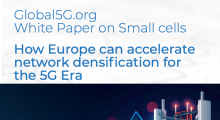5G-VINNI - Not-spots in 5G & beyond: Reflectors as a potential remedy
The channel is modelled using 2.5D Ray Tracer using MATLAB. In addition, channel measurements were collected to reduce the uncertainty in the calibration of the simulations.
Mutual coupling between the antenna array elements were calculated using a spatial correlation factor validated against an impedance-based model. The reflector was modelled using radar-cross section and validated against the Ray Tracer solution.
Furthermore, experimental measurements for a metallic reflective surface were included to attain more realistic performance predictions. This study was conducted at Adastral Park. The network setup consists of a 5G Base station, a passive metallic reflector and a 5G Handset. The carrier frequency is 3.6 GHz with a system bandwidth of a 100 MHz.
Discover more and join the 5G-VINNI community
5G-VINNI website | Twitter: @5gVinni | LinkedIn | YouTube Channel




